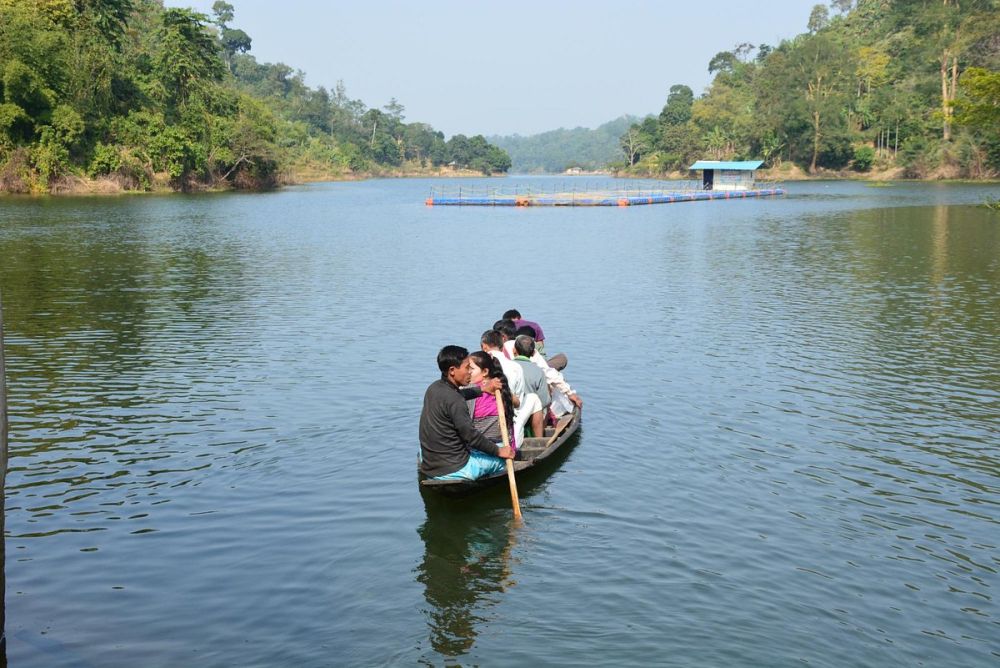

Dumboor Lake is a stunning water body located at the confluence of the Raima and Sarma rivers in the Amarpur Subdivision of Gomati district, Tripura, India. This emerald gem has a drum-like shape, which is why it is named ‘Dumboor’, reflecting the shape of a 'Dumur' (a kind of local fruit). The lake covers an area of about 41 square kilometers and is dotted with 48 islands, which play host to a diverse range of migratory birds in the winter months.
The origins of tourism at Dumboor Lake date back several decades when it was discovered by local and surrounding community members as a place of great natural beauty and tranquility. Over the years, it has caught the attention of domestic travelers seeking peace and relaxation away from the hustle and bustle of city life.
In the early stages, tourism was informal and primarily consisted of picnic goers and day visitors. However, as word of its beauty spread, the government and tourism department took initiatives to develop the area to attract more visitors. They constructed basic amenities and started organizing boat trips to explore the lake and its islands.
Gradually, Dumboor Lake began to receive more attention, leading to the development of better facilities and the introduction of activities such as boating, fishing, and bird watching. The addition of these attractions has made Dumboor Lake a popular destination for both adventure enthusiasts and nature lovers.
The lake also has a significant cultural importance. The famous 'Chabimura' or 'Chobimura' is an adjoining attraction, where visitors witness a treasure trove of rock carvings on a hill overlooking the Gomati River. These carvings date back to the 15th-16th centuries and are a remarkable insight into the region's history.
Furthermore, the water festival celebrated by the local ethnic communities during ‘Bisu’ (a local variant of the Indian festival Bihu) draws crowds who experience the cultural vibrancy and traditions unique to this region.
Today, Dumboor Lake is embracing eco-tourism and sustainable practices. This shift is in response to the growing concern for conserving natural habitats while providing authentic experiences to tourists. The focus is on preserving the natural environment and wildlife, with the promotion of activities that have minimal impact on the ecosystem.
Another trend is the use of digital marketing and social media platforms to attract tourists. Striking images and experiences shared online have bolstered the lake's visibility, enticing visitors from all over India and abroad to explore this untouched paradise.
Additionally, homestays and community-driven tourism initiatives are becoming popular, providing visitors with immersive experiences whilst contributing to local livelihoods.
Dumboor Lake’s journey in the realm of tourism has been a tale of transformation—from being a secluded natural spot to becoming a sought-after destination. As this trend continues, careful planning and conservation efforts are essential to maintain the delicate balance between tourism growth and environmental preservation. For travelers seeking an escape into nature's lap and a taste of indigenous culture, Dumboor Lake remains an idyllic retreat.
To experience the serene beauty of Dumboor Lake and its surrounding areas, visitors are encouraged to plan their trips between October to February when the weather is most favorable. Always check for local guidelines and restrictions, and make sustainable choices to help protect this enchanting ecosystem for generations to come.